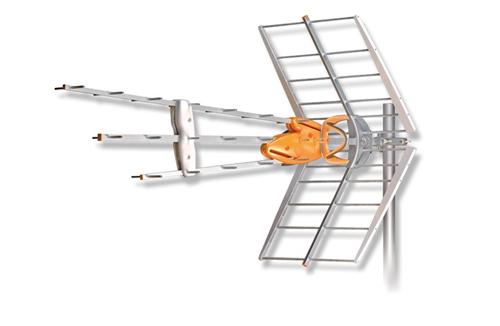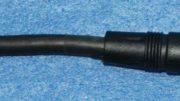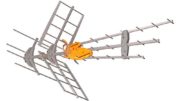In the past, we have talked about “passive radiators,” which are parts of an antenna that focus signal on the part that actually receives it. The part that actually receives the signal is called a “driven element.” Surprisingly, a lot of the makeup of a large antenna can come from passive radiators, but some large antennas have a large number of driven elements.
Diving in deeper
Looking at the antenna above, pretty much all the metal rods you see from the middle to the right are driven elements. That’s what makes this antenna so good at pulling in signals – it’s actually made up of a large number of individual antennas that all pull in signal. Large antennas like the one in the picture are generally log periodic antennas, where a large number of small antennas work together, while other antennas with only one driven element, like this one:

are generally referred to as Yagi antennas. Many times a large antenna will actually have one part that functions as a Yagi and another part that functions as a log periodic.
What’s the difference?
It’s not always easy to tell the difference, but one key giveaway if you look at a large antenna is that driven elements are always connected. If there are small wires coming from the large horizontal rods, those are driven elements and what you have is very likely a log periodic antenna if there are a lot of driven elements. If there aren’t any little wires then it’s pretty likely that the rods are passive radiators and what you have there is a Yagi antenna.
The best antenna for you
When you’re looking at buying an antenna, you have a lot of decisions to make. Log Periodic (or hybrid log periodic/Yagi) antennas are usually bigger. They usually cost more, at least in shipping. They also and let you pull in signals from a wider range without needing to be rotated. On the other hand, Yagi antennas tend to be more compact but just as effective in pulling in distant signals. They’re just not always as capable. Log periodic antennas don’t have as many directors. This means they may be able to pull in signals from a little bit left and right better than Yagi antennas.
Log periodic antennas are also used for large frequency ranges. The big old beasts from the old days are almost all log periodics. They were required when TV broadcasting went from channel 2 to channel 83. Now, most broadcasting takes place on channels 14-36. There are just a few channels still hanging around channels 7-13 and even fewer on channels 2-6. Higher numbered channels need a smaller antenna, while lower numbered ones need a bigger one. So, a smaller Yagi antenna can do a lot of the hard work without being so large or complex.
Choose the right antenna from Solid Signal
Solid Signal has all the best antennas! Shop our great selection now. If you don’t know which antenna you need, we can help! Start by filling out this form. A certified antenna tech will review every bit of information. Then, they’ll send you a list of everything you need. You’ll know about the right antenna, and more! If an amplifier or extra cable is needed, you’ll get the whole list. Still need more help? Call us during east coast business hours. The number is 888-233-7563.





